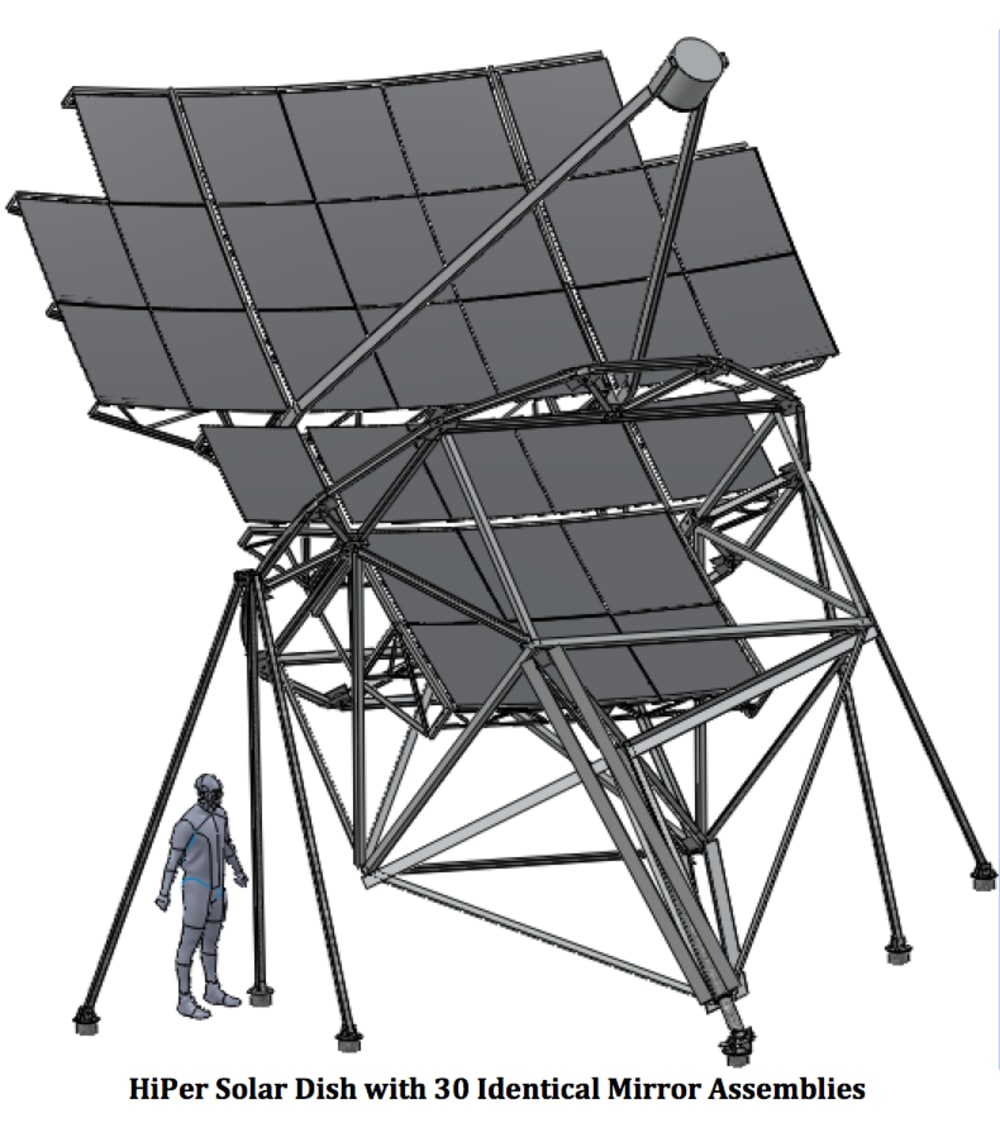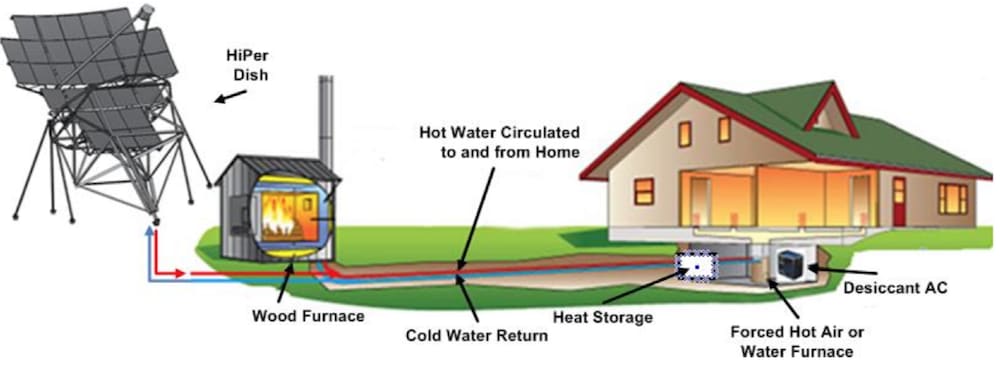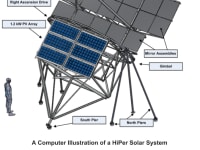Each American burns about 50 pounds of fossil fuels every day. Oil and gas supplies will not sustain this demand because the profitable reserves that greatly expanded the world’s economy are dwindling. Yet we lack renewable energy solutions that can heat and cool our homes, drive industrial thermal processes, or simply harvest enough of the sun’s energy to substantially reduce our carbon footprint. HiPer solar systems offer low-tech ways to build high performance solar equipment using ordinary recyclable materials.
HiPer solar systems warp inexpensive flat mirrors to intensify sunlight 1,000 times and use efficient receivers to transport energy to applications. The concentrator turns upside down to protect mirrors during high winds, hail, frost, snow, and ice storms using the same motors that follow the sun. Anyone handy can make and assemble components that perform well for thirty years, typically delivering more than 75% of available sunlight, even on cold winter days. One needs only hand tools to install these new solar collectors. Controllers will use open source code that reports performance and operational anomalies so users can readily understand and fix a problem. These systems generate their own power and operate independently. Rooftop collectors today generally deliver less than 25% of the available sunlight and, without subsidies, require 30-40 years to pay for themselves.
HiPer solar concentrators should be very affordable. Mirror arrays sized to supply half the energy for a typical home can cost between $300 and $500. The structure, controls, tracking, foundation and heat transfer equipment priced at box store values would also be reasonable. A highly capable module the size of a frying pan will convert intensified sunlight into six kilowatts of power along with twelve kilowatts of heat and should cost less than $3,000. Such a HiPer solar system in the US Northeast can pay for itself in five years when one uses the energy it harvests, returning the energy invested in components in less than six months.
Few today foresee a future where thriving economies sustain global ecosystems. HiPer solar systems offer a versatile “Swiss Army Knife” solar collector that can address many energy needs. Future receivers will use concentrating PV cells to make electricity and deliver heat, perhaps by splitting light to optimize each. Or use thermochemical processes to store energy. The business goal is to crowd fund new developments and involve makers to help equipment concepts grow into a new lifestyle movement that emphasizes using sunlight. Stress analyses and operational tests on components and assemblies will constantly improve designs. Each dish will initially use PV panels for powering drives and connected applications. The design team behind this concept built and tested 31 high performance solar collectors over a thirty-year period, demonstrating systems in five US states and Saudi Arabia. However, only a “Swiss Army Knife” approach seems affordable and simple enough to ignite broad energy consumption and business changes in powering our energy intensive lives.
Like this entry?
-
About the Entrant
- Name:Bill Rogers
- Type of entry:teamTeam members:Bill Rogers
Bob Rogers - Software used for this entry:SolidWorks
- Patent status:patented








